Call for ONB Labs Web Residency 2022.
Deadline for submissions is 19. 04. 2022.
ONB Labs is pleased to announce our Web Residency programme 2022. The programme is part of the Open Digital Library project and funded by the European Union.
We invite artists to submit a proposal for a six-week Web Residency project related to our digital collections of “Wiener Zeitung” (1780-1881) and/or of aerial photographs from the 1930s “Österreich aus der Luft”. The proposed project should aim for a critical and creative engagement with data sets from the ONB Labs, culminating in a web-based work that will be exhibited online in the ONB Labs Artspace.
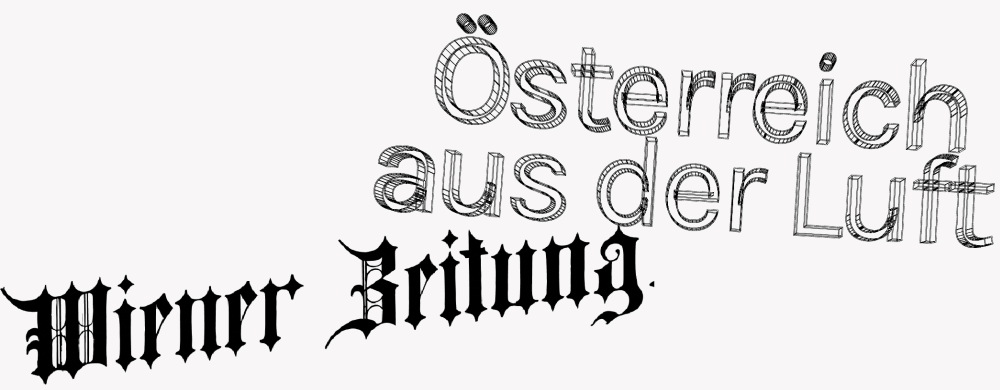
Artistic approaches of all formats, whether they might be digital, physical, sculptural, poetic or conceptual are encouraged; the only requirements are that the final result needs to be exhibited online and relates to the ONB Labs collections of the call. For further informations about collections and available data see the call on the Labs Website.
Selected projects will be supported with 850 Euro for the final artwork.
Timeline & Application
CALL OPEN UNTIL 19.04.2022
SELECTION UNTIL 26.04.2022
WEB RESIDENCY 02.05.2022 – 12.06.2022
Applications can be submitted as PDF to labs@onb.ac.at including.
For further details on the Call, the Selection Process and the Terms & Conditions please visit the the call on the Labs Website.

A sneak peek into the process of making an exposition for the KB Atelier

The students of IMD are divided in 4 groups: each group will make a prototype according to the assignment (the alba amicorum collection of the KB).
You can follow their process via these URL’s:
Group 1: https://smooth-clutch-fae.notion.site/Client-assignment-bcee7ea3843c46378411d4d4b72ae134
Group 2: https://www.notion.so/TEAM-JETA-117f694817ef4a19ab3b4b893253997d
Group 3: https://elastic-production-d21.notion.site/Group-3-2c3f42349c4444c7a376222154d74855
Group 4: https://www.notion.so/NOVUS-NEXUS-c017e0df054346edb77d088261c8c99a

On Monday, 21 February 2022, students from the Master Non Linear Narrative and the Bachelor Interactive / Media / Design departments of the Royal Academy of Art visited the National Library of The Netherlands (Koninklijke Bibliotheek). This day we organized a kick-off for a semester-long collaboration, during which students will research the library’s comprehensive catalogue of alba amicorum (friendship books) with a view to making these resources accessible to a wider audience (like e.g. other makers, creative users). These projects are a follow-up to the project with the KABK’s IAFD department.
The kick-off started on site, with presentations by several restoration experts. These talks were followed by a guided tour of the library’s large-scale storage depot. The program was completed by talks on user accessibility within an open digital context. In order to understand the significance of the alba amicorum collection and gain insight into how archives can function as a source of inspiration for new cultural creativity, students attended presentations by Rianne Koning, Coordinator Public Programming, Jeroen Vandommele, Curator Modern Manuscripts, Sophie Reinders, Assistant Professor at Radboud Universiteit Nijmegen and Dick van Dijk, Creative Director at Waag Society.
[Photo credits: Roel Backaert]
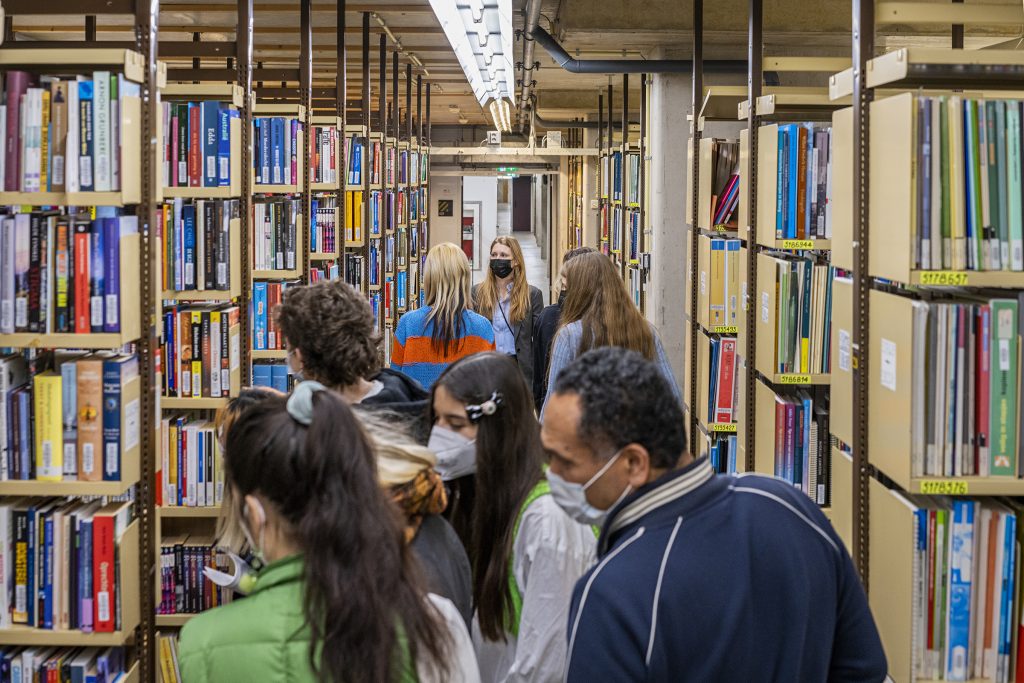
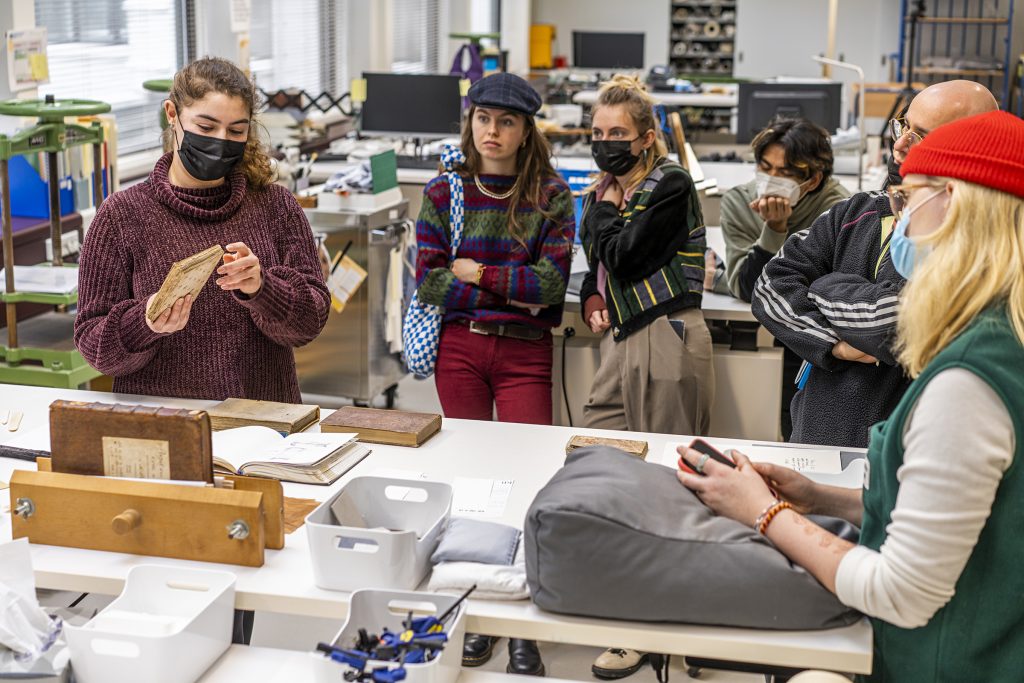

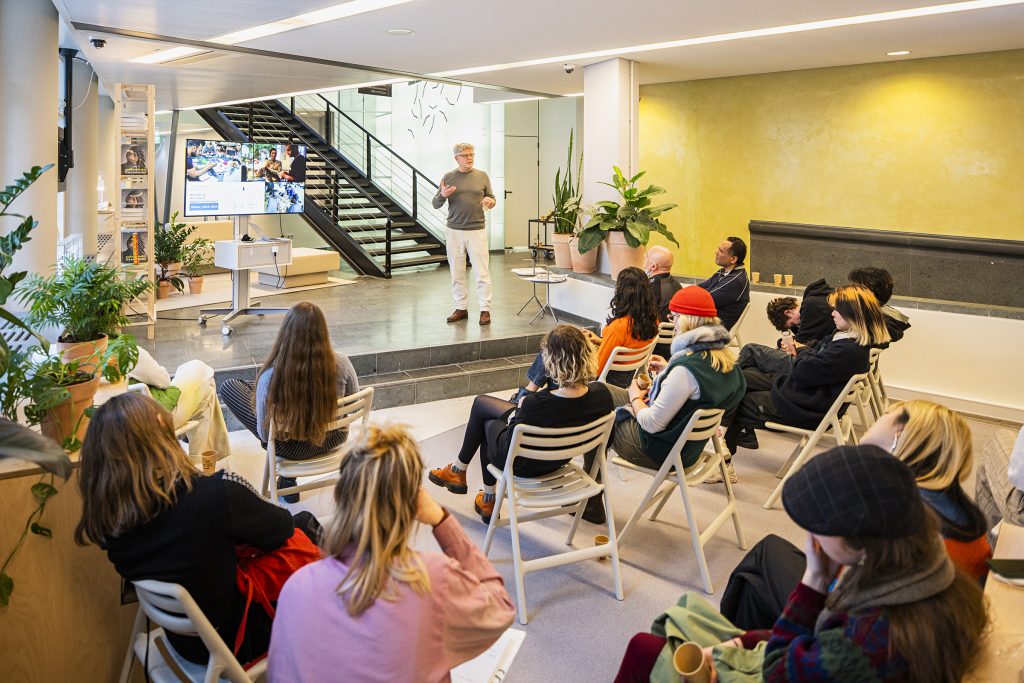
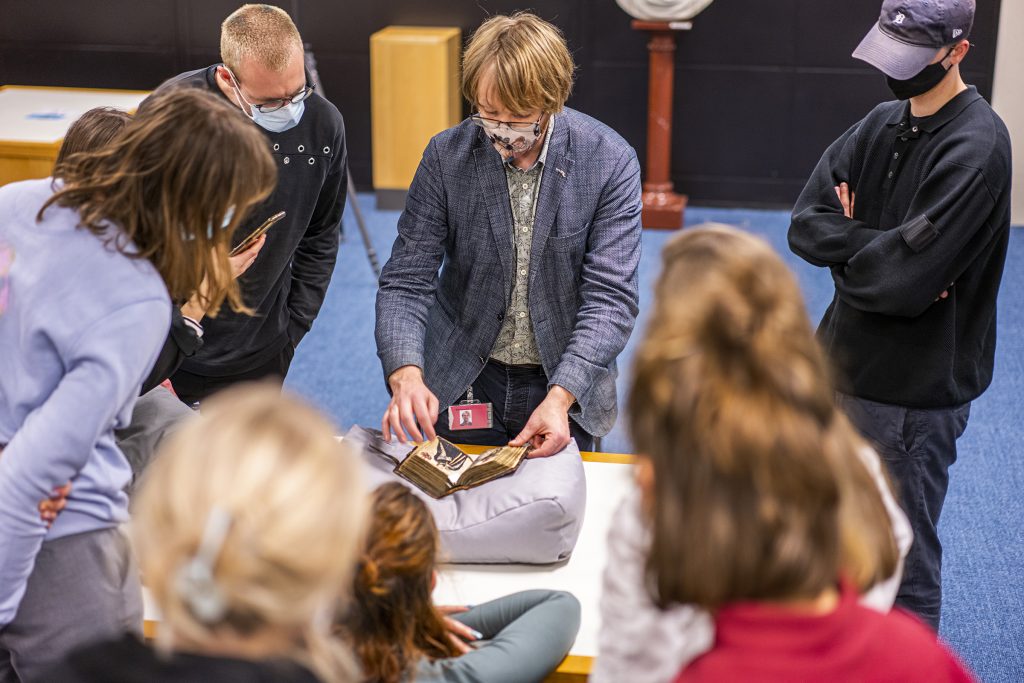
April 4, 2022 @ 10:00 – 17:00
Midterm presentation by NLN and IMD students of their concepts and prototypes.
Rianne Koning

A collaboration between the National Library of the Netherlands (KB) and the Royal Academy of Art (KAKB), The Hague.
15 graduating students of the Interior Architecture and Furniture Design department developed interactive spatial experiences for the visitors of the KB by exploring the unique collection of the alba amicorum, the friendship books from the 16th century and beyond, which can be seen as predecessors of today’s social media.
Film credits: Medina Resic

This poster is one of the deliverables of the project with the IAFD students. All 5 projects are summarized in this poster. Credits for the production of this leaflet goes to: Tariq Heijboer & Anne van den Dool, commissioned by the National Library of The Netherlands (KB).
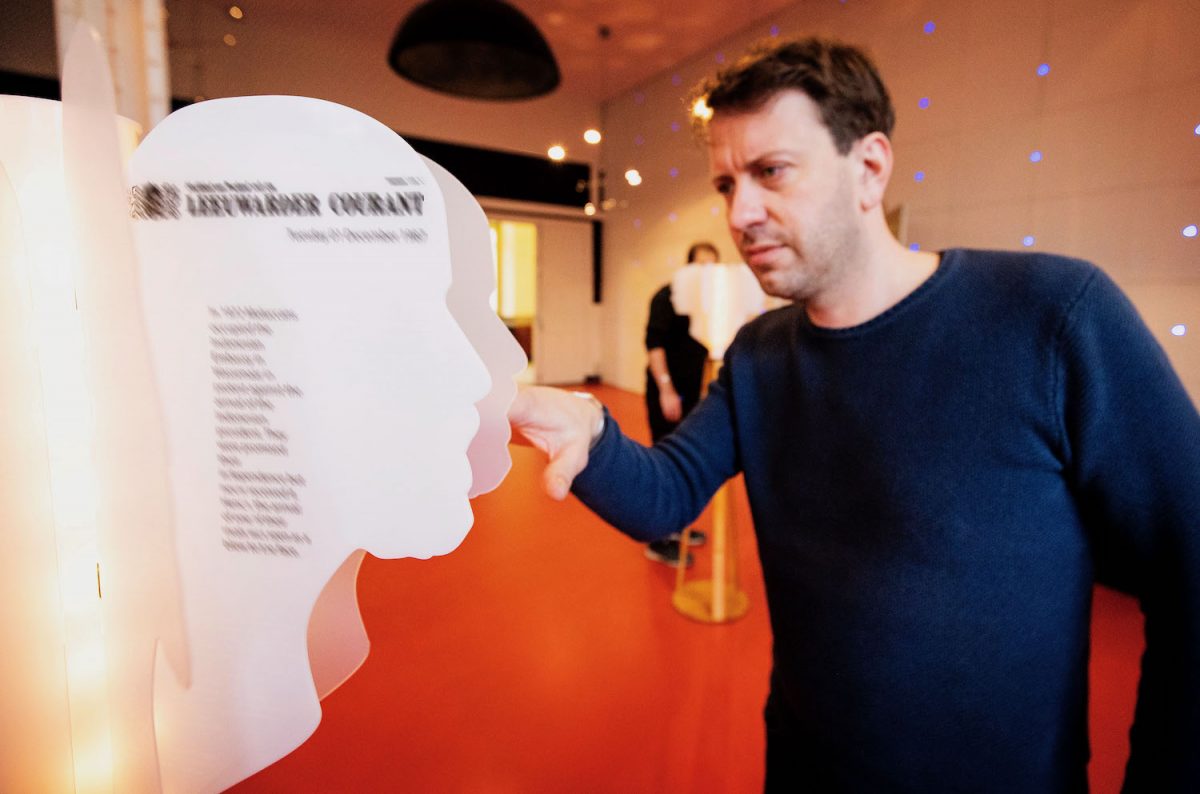
The «Haagse Bakjes» concept exposes a fundamental role of the library. That of being a neutral space where all opinions and viewpoints are archived, but readily available. Situated near the coffee machine the concept highlights one topic, but offers an environment of perspectives for reading and discussing while people enjoy a coffee break.
Student team: Isabella Boezel, Kathleen Panariti, Levie van der Heijde, Nova Meijer, Sonia Alarcon Segarra
In the 2021-2022 edition of the Interactive Environments minor they collaborated with the KB National Library to develop 5 concepts as an answer to the following design brief. Traditionally, libraries are strongholds for people who enjoy consuming tangible content. However nowadays, more and more content is being published digitally and analogue collections are being digitalised. And thus, the question arises: how can libraries adapt and thrive in the future, while also bridging the gap between their physical and digital collections and spaces?
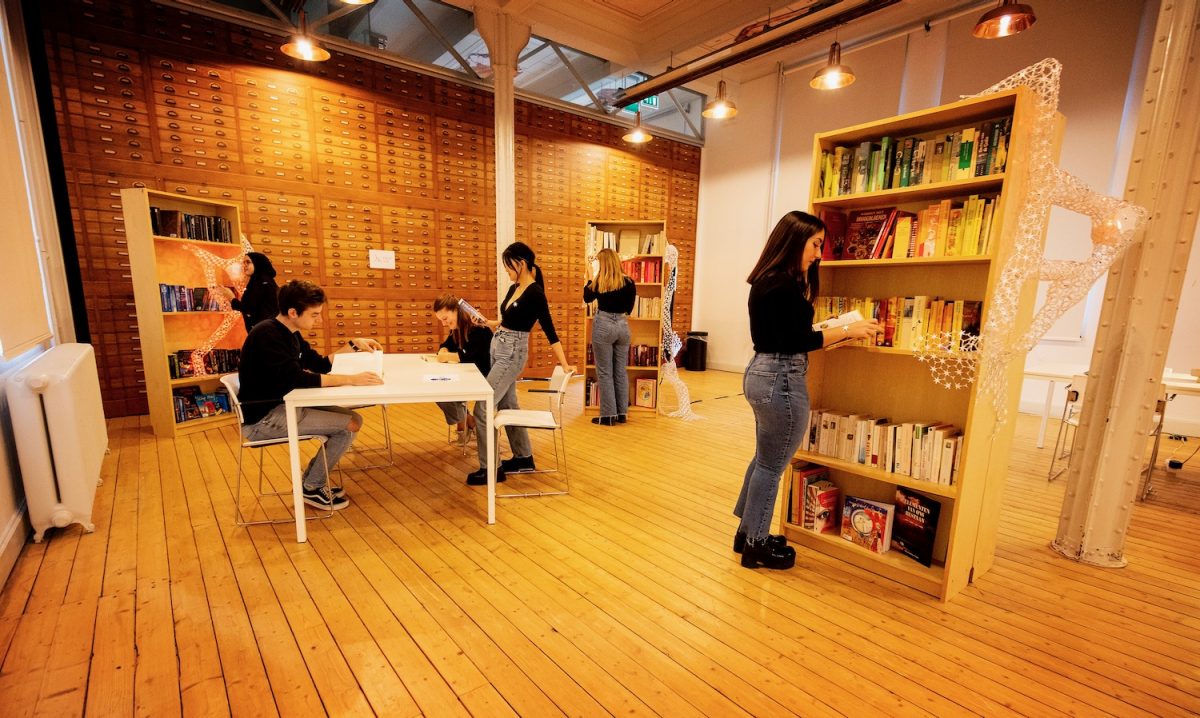
The «Roots» concept envisions that the digital collection actually overgrows the physical books and furniture in the library. A library visitor can easily bump into data from the growing digital collection and become inspired in the same way as if they were browsing the physical versions of the books.
Student team: Agnes Lee, Anna Belenguer Martí, Lonneke Visser, Meryem Maskouri, Nathan Douenburg, Pien Adank
In the 2021-2022 edition of the Interactive Environments minor they collaborated with the KB National Library to develop 5 concepts as an answer to the following design brief.
Traditionally, libraries are strongholds for people who enjoy consuming tangible content. However nowadays, more and more content is being published digitally and analogue collections are being digitalised. And thus, the question arises: how can libraries adapt and thrive in the future, while also bridging the gap between their physical and digital collections and spaces?

The Reflect concept envisions the facade of the library building to attract people passing by through light and sound. Once the attention is caught visitors can interact and investigate data from the digital collection by moving their body.
Student team: Blanca Martin Fernández, Eva Le Navenec, Flore Paumen, Juliët Wagemakers, Thomas Sjerps, Lin Zhou
Interactive Environments minor edition 2021-2022
In the 2021-2022 edition of the Interactive Environments minor they collaborated with the KB National Library to develop 5 concepts as an answer to the following design brief.
Traditionally, libraries are strongholds for people who enjoy consuming tangible content. However nowadays, more and more content is being published digitally and analogue collections are being digitalised. And thus, the question arises: how can libraries adapt and thrive in the future, while also bridging the gap between their physical and digital collections and spaces?
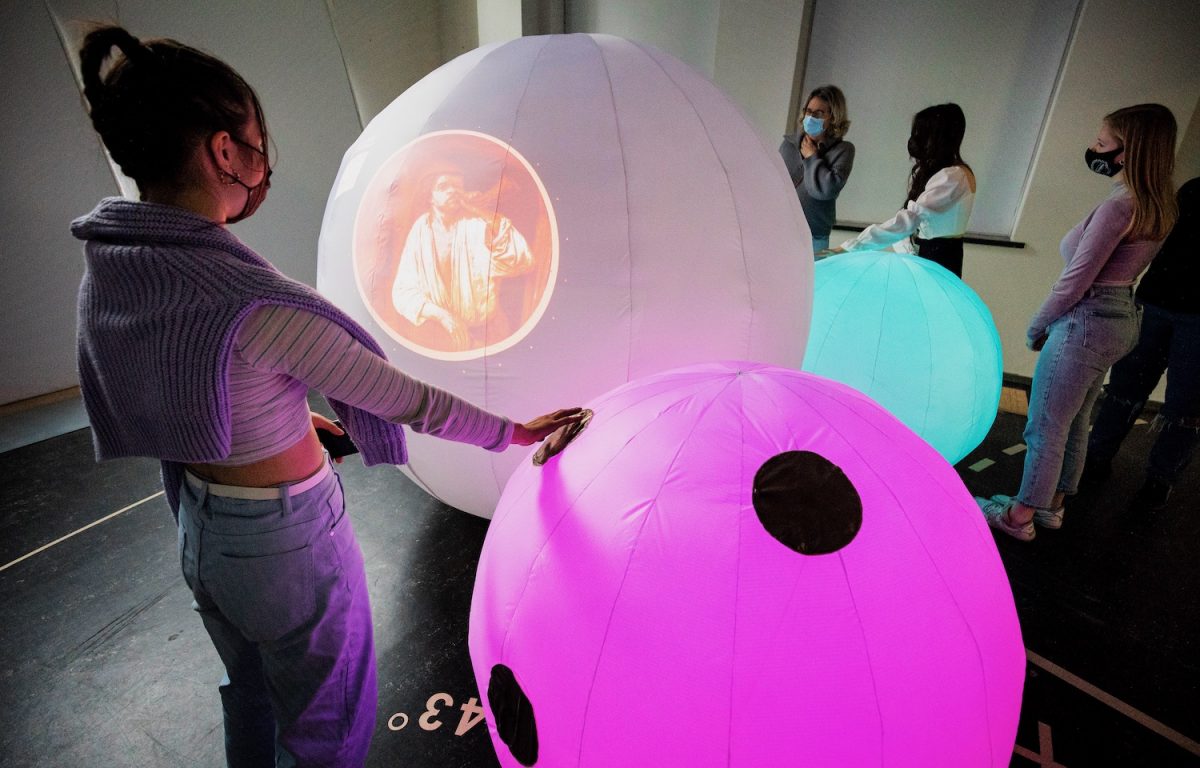
The KY-O-MI concept makes it possible for the library to expose their digital collection at a satellite location. For example, at the train station or during an event at a university. The inflatable installation creates two access point to the digital collection of the library to allow data exploration in a social setting.
Student team: Dorrit Huijskes, Eva Jonkers, Gloria Orcan, Kenwyn Hoefnagel, Loes de Vries, Vivian Nguyen
Interactive Environments minor edition 2021-2022
In the 2021-2022 edition of the Interactive Environments minor they collaborated with the KB National Library to develop 5 concepts as an answer to the following design brief. Traditionally, libraries are strongholds for people who enjoy consuming tangible content. However nowadays, more and more content is being published digitally and analogue collections are being digitalised. And thus, the question arises: how can libraries adapt and thrive in the future, while also bridging the gap between their physical and digital collections and spaces?

